You package: business history by subscription
The American tech-giant Netflix began with sales and rental of DVD movies, which happy movie fans could receive by mail. The service opened in 1997 is still active, despite the radically changed priorities of the corporation.
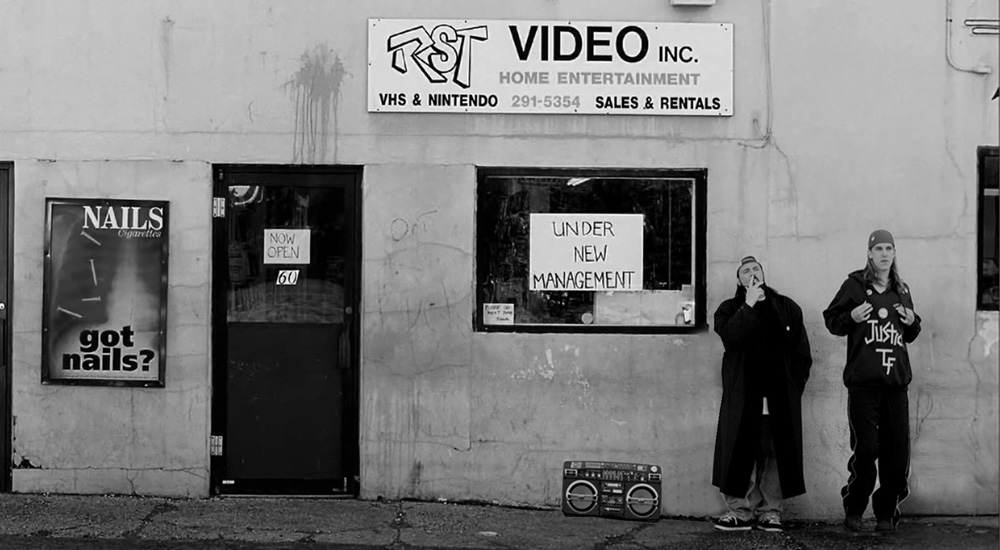
Reed Hastings, one of the co-founders of Netflix, loves to tell the bike about how he did not have time to return the cassette from the Appolon-13 and the video rental fined him as much as $ 40. Allegedly, it was a large fine that gave him the idea of an alternative and more convenient movie rental service, with a fixed fee and subscription.
')
Of course, the truth is much more complicated. Hastings, together with his business partner Mark Randolph, wanted to create an Amazon counterpart, and took advantage of the good old American tradition of ordering goods. In the 21st century, it has become something more, a completely new industry for outlandish startups who are ready to regularly send you not only movie discs, but also boxes with socks, geeky paraphernalia, cosmetics and razors. Pack anything, even an elephant: just specify what color!
Actually ordering goods by mail is a respectable industry, which owes its existence in modern form to Benjamin Franklin himself. It is reliably known that product catalogs have existed at least since the 15th century, when the Venetian book printer Ald Manutius began publishing them. But it was the American founding father who, in 1744, guessed to give the opportunity to order things from the catalog (specifically, books printed in his typography in Philadelphia) "to those persons who live in remote places." It is curious that there is no information about the books sent in those days by mail; if Franklin gave something, it was an opportunity.

The first to adopt a new business model were the sellers of seeds and the owners of plant nurseries, who have sent their goods to American settlers since the 1830s. Then they were joined by publishers, haberdashery and other businessmen. By their efforts towards the end of the American Civil War, consumer goods became available even in the most remote corners of the country. Epoch and time turned out to be extremely suitable, because the young American state was expanding; it would be hard for its citizens to fulfill the “explicit designation” without shoes or seed. It is noteworthy that the post catalogs of those times were printed using the latest technologies, including chromolithography (patented in 1837). Bright, realistic images were no less important for sales than regular mail.
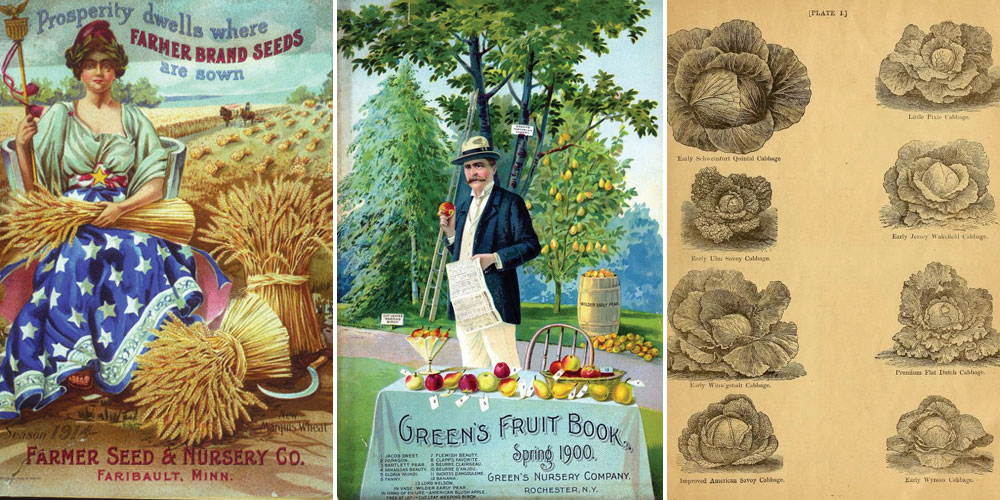
Another important stage in the development of the industry is associated with the brand Columbia House. In 1955, the record label Columbia Records launched an experiment called the Columbia Records Club: a club of paid subscriptions to music recordings, aimed at people in rural areas, where it was difficult to get vinyl (later tapes and discs). In the early 1970s, the club's proliferated divisions united under the single brand Columbia House, which breathed life into the endless cultural wastelands of the American suburbia.

This name has become a landmark for all Americans, whose youth fell on the 70s, 80s and 90s. By issuing a contract and selecting performers, a Columbia House client, for a regular fee, got access to the music in the form of “packages of happiness”, which came until he unsubscribed from the club (not the simplest procedure). For many teens, a subscription to Columbia was the first bitter credit experience. On the other hand, more intelligent individuals deceived the company by getting records for free. The club reached its climax in 1994-1996, gaining 16 million subscribers. It existed right up to 2015, when it went bankrupt, unable to withstand the competition with the Internet.
The aforementioned Netflix, meanwhile, survived the advent of the global network, as it caught the wave of new technologies in time (ie streaming). The idea with the subscription packages, meanwhile, did not disappear anywhere, and finally moved to the area of those products that can not be downloaded. Thus, the “subscription business” model was finally formed - subscription commerce.
There are three reasons for its appearance and strengthening: do customers get tired of choosing (or were they finally affected by the speeches of George Carlin? ), Lack of time for regular purchases and, of course, convenience. Some like to add here and the “desire to save,” however, data from the Hitwise analytical center suggests that at the present time the factor of surprise, surprise, desire to pamper yourself is more important.
This is how the average American consumers of the boxes by subscription in the middle of 2017 look like:
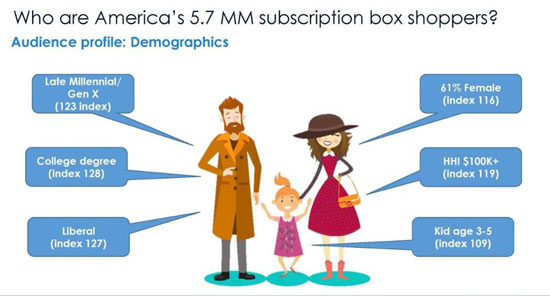
It is clear that these guys rather want to spend a dollar earned through hard work. Or they do not have the strength after a busy day to run to the store for fresh razors. Yes, the same razors are ordered on Amazon in two clicks. But what if someone suggested to a tired liberal hipster to solve urgent problems with dull blades for him?
This man turned out to be an entrepreneur Michael Dubin, who in 2012 founded the Dollar Shave Club. The idea is simple: the customer subscribes and receives a fresh set of razors each month, delivered straight to your home. Initially, the issue price was 1 dollar per month (plus a couple more dollars for delivery). The popularity of the club grew, including due to effective viral advertising. Alas, the same could not be said about profit. For a long time, a startup worked at a loss, until in July 2016 it was acquired by the giant Unilever for $ 1 billion.
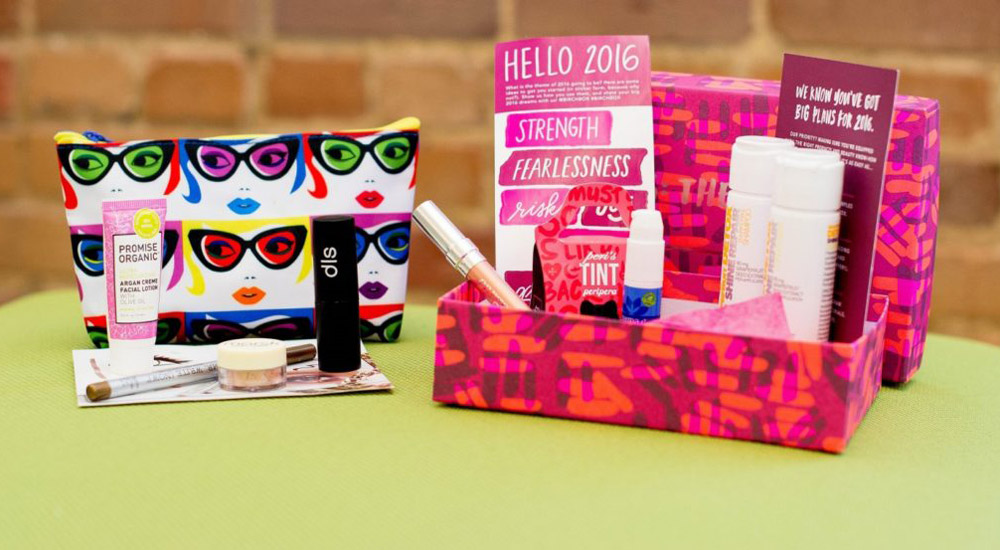
Interestingly, the Dollar Shave Club is the only successful example of a delivery service for men. For 2018, more than a third of startups in the industry are engaged in products for women's beauty and cosmetics: Ipsy, Birchbox, Popsugar, GlossyBox, BeautyFix, and so on. In most cases, boxes are packed with probes; full-size packs are also found. The segment differs in girlish inconstancy, fierce competition and constant rotation (some startups come, others die).

The company Ipsy, founded by beauty blogger Michelle Fan, has long been a sort of "queen bee" cosmetic boxed swarm. Now she is losing ground under the pressure of rivals. Special existential danger is represented by large companies that are interested in the new niche, of which their own projects have already been launched by Sephora, Target, Walmart and Allure magazine. It is important to note the fundamental difference between beauty boxes and the same packages with blades: the first, unlike the second, need proper curative management and a creative approach to serving. It is also very difficult to keep a customer base. But the aggressive environment gives small startups a chance to stay afloat, as long as they know what they are doing.
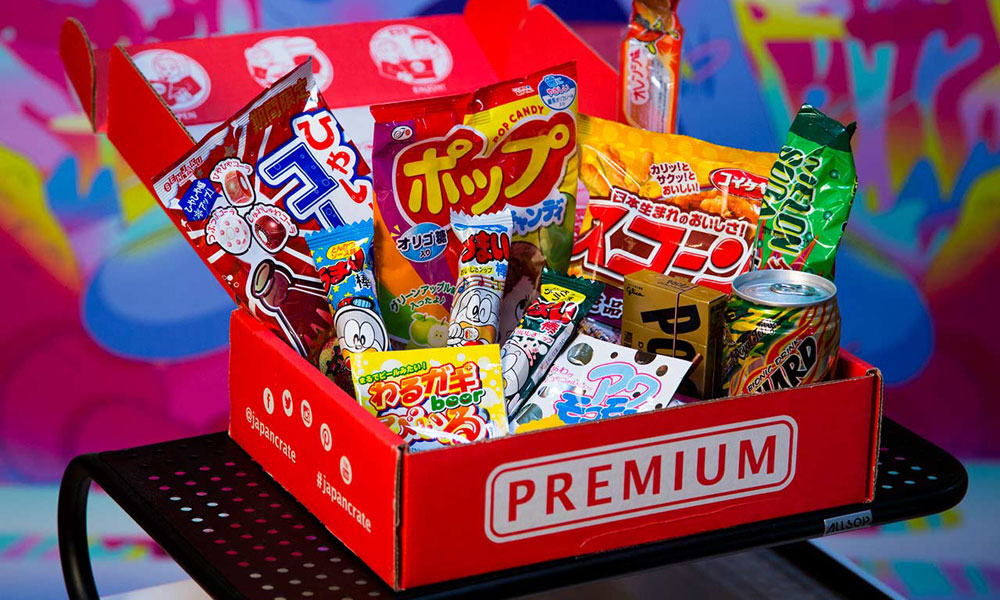
Another third of the “pie” of American subscription commerce was eaten away by food startups. Their main difference from the usual delivery from the store is ideological. The most famous box, GrazeBox , is full of useful snack items; Japan Crate offers sweets and snacks from Japan; Mantry is generally a hand-crafted box of food for real men (bacon, jerky, spicy sauce, some more bacon). Stand alone are the sets of "self-cook", which include a recipe and ingredients for it. The most famous startup of this type, Blue Apron , sends everything you need to prepare a vegetarian or meat dinner; There are only a couple of recipes in the Turntable Kitchen box, some ingredients and a vinyl record matched to them; Sun Basket’s many options include vegan, Mediterranean, paleo and other trendy cuisines.
The rest of the companies in the industry are a bright variety of ideas and proposals, which goes somewhat against the original idea of simplifying shopping. That is, as long as the regular buyer chooses between the goods, the customer of regular delivery by subscription is forced to rush between services, each of which is very aggressively fighting for his attention. The overall picture looks like this:
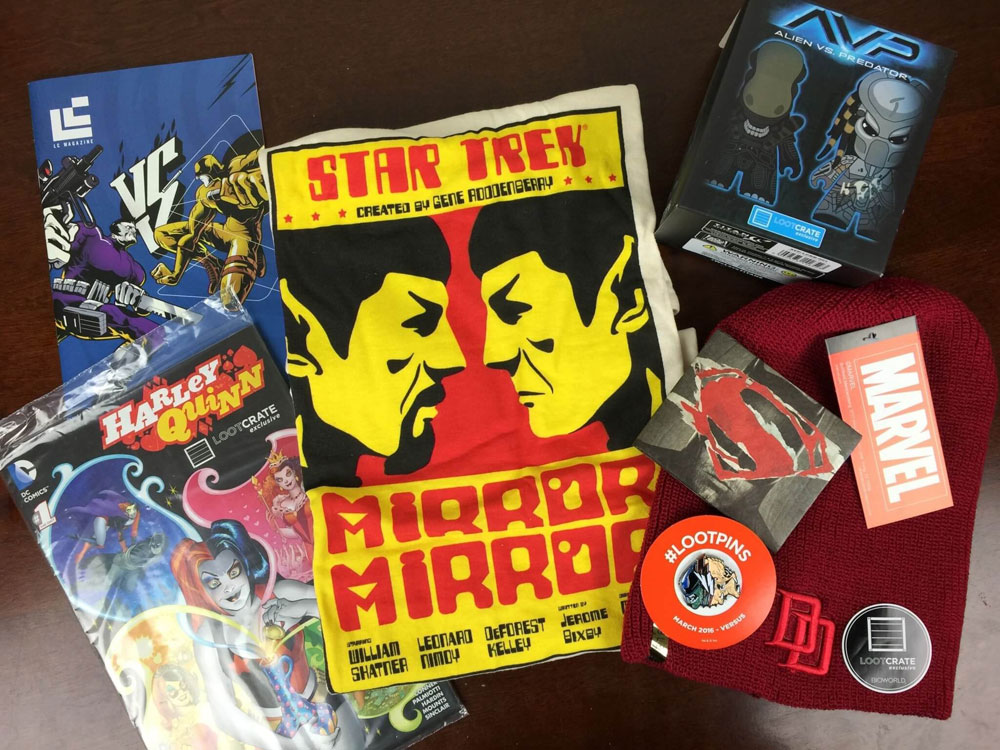
Loot Crate is a geek-oriented service that is mainly popular with men. A standard package includes a comic, a T-shirt, a useful item (such as a backpack), a collector's figure. You can choose topics from anime and Stranger Things to the Marvel and Fallout universes. Subscription price starts from $ 15.95 per month plus shipping. Loot Crate does not serve Nerds from the CIS and Russia, so in order to receive the coveted box you will have to turn to intermediaries (or bite your elbows ...).

Subscribing to Munchpack gives you the chance to enjoy harmful tasty things from around the world. In the package can be Pocky chocolate sticks with a rare taste, Korean cookies in the form of pandas (it is a pity to even touch them), and other exotic candies, chips and snacks. Prices start at $ 10 per package, depending on how tight the customer wants to fill it with junk food. Startup does not serve sweet tooth from Russia.

BarkBox is a box for dogs and dog lovers from real enthusiasts of everything that concerns true four-legged pets. The package is selected according to the size and breed of the dog and consists of a pair of packets with healthy food, chewing delicacy and toys. All this is organized on specific topics. For example: Japan, New York, knighthood, and so on. BarkBox deliver parcels only to the USA and Canada, prices start at $ 20 per month.

The box from the aforementioned Dollar Shave Club looks simple and tasteful. The starter kit can now include razors, real men's (tm) One Wipe Charlies wet toilet paper, shaving oil and other personal care products. Subsequent packages will contain only spare blades, you will need to re-buy the paste and gel you like manually. The cost of the starting set starts from $ 5, the next months will cost $ 9. The list of countries served by the service includes the USA, Canada, Australia and the UK. By the way, razors are delivered to American soldiers who serve throughout the world.
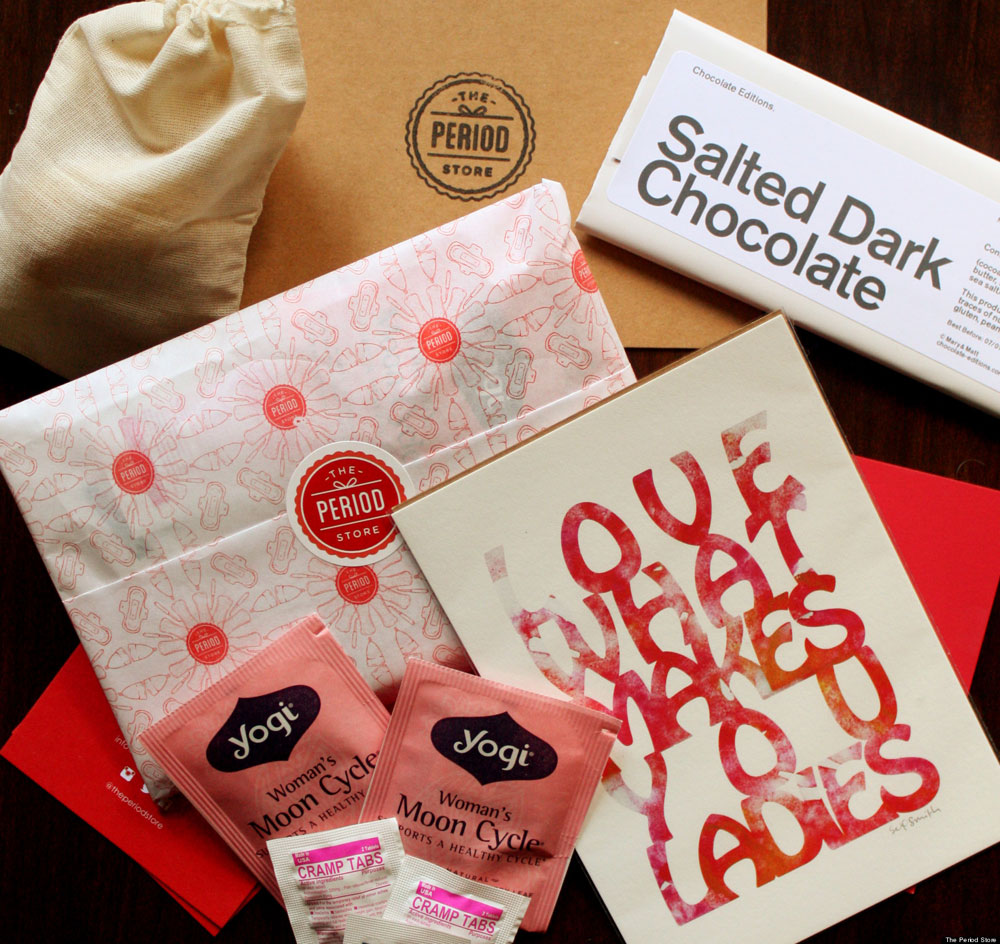
The list of original monthly packages would be completely incomplete without The Period Store startup. Yes, this is a monthly box with pads or tampons, as well as herbal infusions, chocolates, disposable heaters, stain remover, painkillers, and so on. The project has only a few notable competitors, despite the incredibly successful business model. Subscription price - from $ 15 per month, delivery is carried out only in the US and Canada.

A personal stylist for a subscription is also a completely compatible idea with boxes. Loot Crate has some options with geek t-shirts and socks, and serious startups like Bombfell send out a full set of “adult” clothes, selected at the same time by the algorithms and the person-curator. What came up stays at home, the rest is sent back. The price for a subscription is $ 20 per month, one thing costs on average $ 89. Specifically, Bombfell deals exclusively with men's wardrobe and sends stylish packages only in the USA.
In Russia, a “subscription business” has a serious enemy: poor logistics. Few companies that manage to gain a foothold and fail to close rarely work outside of Moscow and St. Petersburg. The second problem is the distrust of customers who do not agree to tie a bank card to the service, and they are wary of surprises. Nevertheless, a number of domestic companies managed to set up a business without closing in a year. These are “Just a razor club” , Trusbox lingerie store , Roasting coffee and Food Party products, Newbeautybox , Glambox , InstaBeauty cosmetic subscriptions.
Madness of the brave we sing glory. However, looking at the foreign holiday of the original retail, don't you also want to do something like this: beautiful, useful and pleasant? Team Madrobots wanted. Therefore, last September we took a chance and collected our own trial box with all sorts of useful things. It was called Gadget Box # 1 .

Separately, buying the contents would have cost 10,000 rubles, but we sold it for only 5,490 rubles, plus attracted partners: BelkaCar, Mosigra, Dodo Pizza and City Quest, each of whom prepared a bonus in the form of a promotional code for services or gifts.
The party of boxes shattered surprisingly quickly. Well aware that gadgets are not cosmetics or even superhero figures, we didn’t plan any subscriptions. However, even Walmart has seasonal makeup boxes and comes out four times a year; we also decided to build the Gadget Box for those dates when the geek is especially needed. That is, for the holidays. For example, by the 23rd of February, which will come in less than a week.
So, we launched Gadget Box # 2 , whose composition is strictly classified. This time, in every tenth box we put a handheld heart rate monitor Mio Velo . In addition, bonuses and discounts from us and our partners and one guaranteed men's gift are hidden in all the boxes. The total price of the contents of the box (with the exception of the heart rate monitor) is 9,490 p., But we sell it for 5,490 p. Circulation is limited: who had time, he bought.
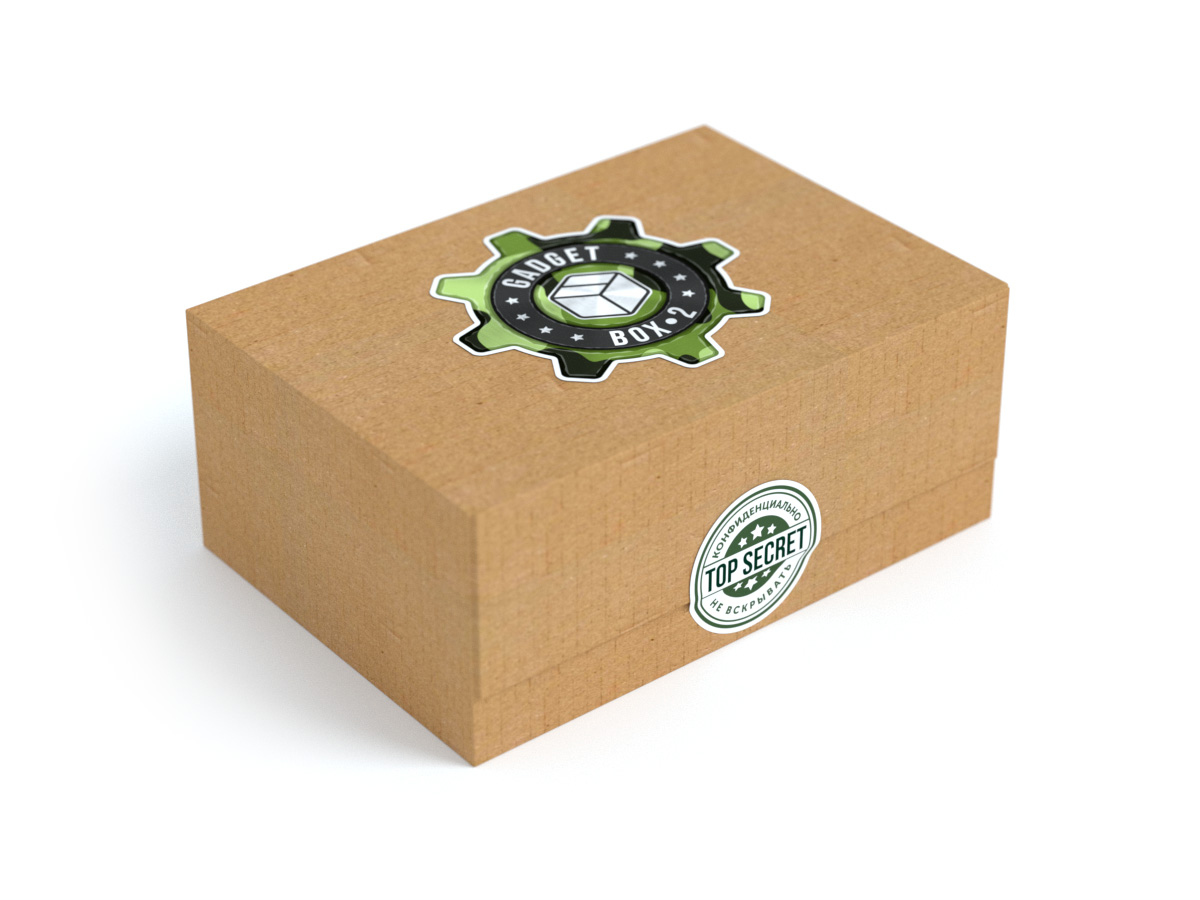
Have you already bought the Gadget Box and want to share your impressions, or have you personally made any interesting boxing with loot? Should I prepare Gadget Box for March 8? We will wait for comments and suggestions on gadgets and products for the next box.

Reed Hastings, one of the co-founders of Netflix, loves to tell the bike about how he did not have time to return the cassette from the Appolon-13 and the video rental fined him as much as $ 40. Allegedly, it was a large fine that gave him the idea of an alternative and more convenient movie rental service, with a fixed fee and subscription.
')
Of course, the truth is much more complicated. Hastings, together with his business partner Mark Randolph, wanted to create an Amazon counterpart, and took advantage of the good old American tradition of ordering goods. In the 21st century, it has become something more, a completely new industry for outlandish startups who are ready to regularly send you not only movie discs, but also boxes with socks, geeky paraphernalia, cosmetics and razors. Pack anything, even an elephant: just specify what color!
Actually ordering goods by mail is a respectable industry, which owes its existence in modern form to Benjamin Franklin himself. It is reliably known that product catalogs have existed at least since the 15th century, when the Venetian book printer Ald Manutius began publishing them. But it was the American founding father who, in 1744, guessed to give the opportunity to order things from the catalog (specifically, books printed in his typography in Philadelphia) "to those persons who live in remote places." It is curious that there is no information about the books sent in those days by mail; if Franklin gave something, it was an opportunity.

The first to adopt a new business model were the sellers of seeds and the owners of plant nurseries, who have sent their goods to American settlers since the 1830s. Then they were joined by publishers, haberdashery and other businessmen. By their efforts towards the end of the American Civil War, consumer goods became available even in the most remote corners of the country. Epoch and time turned out to be extremely suitable, because the young American state was expanding; it would be hard for its citizens to fulfill the “explicit designation” without shoes or seed. It is noteworthy that the post catalogs of those times were printed using the latest technologies, including chromolithography (patented in 1837). Bright, realistic images were no less important for sales than regular mail.

Another important stage in the development of the industry is associated with the brand Columbia House. In 1955, the record label Columbia Records launched an experiment called the Columbia Records Club: a club of paid subscriptions to music recordings, aimed at people in rural areas, where it was difficult to get vinyl (later tapes and discs). In the early 1970s, the club's proliferated divisions united under the single brand Columbia House, which breathed life into the endless cultural wastelands of the American suburbia.

This name has become a landmark for all Americans, whose youth fell on the 70s, 80s and 90s. By issuing a contract and selecting performers, a Columbia House client, for a regular fee, got access to the music in the form of “packages of happiness”, which came until he unsubscribed from the club (not the simplest procedure). For many teens, a subscription to Columbia was the first bitter credit experience. On the other hand, more intelligent individuals deceived the company by getting records for free. The club reached its climax in 1994-1996, gaining 16 million subscribers. It existed right up to 2015, when it went bankrupt, unable to withstand the competition with the Internet.
The aforementioned Netflix, meanwhile, survived the advent of the global network, as it caught the wave of new technologies in time (ie streaming). The idea with the subscription packages, meanwhile, did not disappear anywhere, and finally moved to the area of those products that can not be downloaded. Thus, the “subscription business” model was finally formed - subscription commerce.
There are three reasons for its appearance and strengthening: do customers get tired of choosing (or were they finally affected by the speeches of George Carlin? ), Lack of time for regular purchases and, of course, convenience. Some like to add here and the “desire to save,” however, data from the Hitwise analytical center suggests that at the present time the factor of surprise, surprise, desire to pamper yourself is more important.
This is how the average American consumers of the boxes by subscription in the middle of 2017 look like:

It is clear that these guys rather want to spend a dollar earned through hard work. Or they do not have the strength after a busy day to run to the store for fresh razors. Yes, the same razors are ordered on Amazon in two clicks. But what if someone suggested to a tired liberal hipster to solve urgent problems with dull blades for him?
This man turned out to be an entrepreneur Michael Dubin, who in 2012 founded the Dollar Shave Club. The idea is simple: the customer subscribes and receives a fresh set of razors each month, delivered straight to your home. Initially, the issue price was 1 dollar per month (plus a couple more dollars for delivery). The popularity of the club grew, including due to effective viral advertising. Alas, the same could not be said about profit. For a long time, a startup worked at a loss, until in July 2016 it was acquired by the giant Unilever for $ 1 billion.

Interestingly, the Dollar Shave Club is the only successful example of a delivery service for men. For 2018, more than a third of startups in the industry are engaged in products for women's beauty and cosmetics: Ipsy, Birchbox, Popsugar, GlossyBox, BeautyFix, and so on. In most cases, boxes are packed with probes; full-size packs are also found. The segment differs in girlish inconstancy, fierce competition and constant rotation (some startups come, others die).

The company Ipsy, founded by beauty blogger Michelle Fan, has long been a sort of "queen bee" cosmetic boxed swarm. Now she is losing ground under the pressure of rivals. Special existential danger is represented by large companies that are interested in the new niche, of which their own projects have already been launched by Sephora, Target, Walmart and Allure magazine. It is important to note the fundamental difference between beauty boxes and the same packages with blades: the first, unlike the second, need proper curative management and a creative approach to serving. It is also very difficult to keep a customer base. But the aggressive environment gives small startups a chance to stay afloat, as long as they know what they are doing.

Another third of the “pie” of American subscription commerce was eaten away by food startups. Their main difference from the usual delivery from the store is ideological. The most famous box, GrazeBox , is full of useful snack items; Japan Crate offers sweets and snacks from Japan; Mantry is generally a hand-crafted box of food for real men (bacon, jerky, spicy sauce, some more bacon). Stand alone are the sets of "self-cook", which include a recipe and ingredients for it. The most famous startup of this type, Blue Apron , sends everything you need to prepare a vegetarian or meat dinner; There are only a couple of recipes in the Turntable Kitchen box, some ingredients and a vinyl record matched to them; Sun Basket’s many options include vegan, Mediterranean, paleo and other trendy cuisines.
The rest of the companies in the industry are a bright variety of ideas and proposals, which goes somewhat against the original idea of simplifying shopping. That is, as long as the regular buyer chooses between the goods, the customer of regular delivery by subscription is forced to rush between services, each of which is very aggressively fighting for his attention. The overall picture looks like this:

Loot Crate is a geek-oriented service that is mainly popular with men. A standard package includes a comic, a T-shirt, a useful item (such as a backpack), a collector's figure. You can choose topics from anime and Stranger Things to the Marvel and Fallout universes. Subscription price starts from $ 15.95 per month plus shipping. Loot Crate does not serve Nerds from the CIS and Russia, so in order to receive the coveted box you will have to turn to intermediaries (or bite your elbows ...).

Subscribing to Munchpack gives you the chance to enjoy harmful tasty things from around the world. In the package can be Pocky chocolate sticks with a rare taste, Korean cookies in the form of pandas (it is a pity to even touch them), and other exotic candies, chips and snacks. Prices start at $ 10 per package, depending on how tight the customer wants to fill it with junk food. Startup does not serve sweet tooth from Russia.

BarkBox is a box for dogs and dog lovers from real enthusiasts of everything that concerns true four-legged pets. The package is selected according to the size and breed of the dog and consists of a pair of packets with healthy food, chewing delicacy and toys. All this is organized on specific topics. For example: Japan, New York, knighthood, and so on. BarkBox deliver parcels only to the USA and Canada, prices start at $ 20 per month.

The box from the aforementioned Dollar Shave Club looks simple and tasteful. The starter kit can now include razors, real men's (tm) One Wipe Charlies wet toilet paper, shaving oil and other personal care products. Subsequent packages will contain only spare blades, you will need to re-buy the paste and gel you like manually. The cost of the starting set starts from $ 5, the next months will cost $ 9. The list of countries served by the service includes the USA, Canada, Australia and the UK. By the way, razors are delivered to American soldiers who serve throughout the world.

The list of original monthly packages would be completely incomplete without The Period Store startup. Yes, this is a monthly box with pads or tampons, as well as herbal infusions, chocolates, disposable heaters, stain remover, painkillers, and so on. The project has only a few notable competitors, despite the incredibly successful business model. Subscription price - from $ 15 per month, delivery is carried out only in the US and Canada.

A personal stylist for a subscription is also a completely compatible idea with boxes. Loot Crate has some options with geek t-shirts and socks, and serious startups like Bombfell send out a full set of “adult” clothes, selected at the same time by the algorithms and the person-curator. What came up stays at home, the rest is sent back. The price for a subscription is $ 20 per month, one thing costs on average $ 89. Specifically, Bombfell deals exclusively with men's wardrobe and sends stylish packages only in the USA.
In Russia, a “subscription business” has a serious enemy: poor logistics. Few companies that manage to gain a foothold and fail to close rarely work outside of Moscow and St. Petersburg. The second problem is the distrust of customers who do not agree to tie a bank card to the service, and they are wary of surprises. Nevertheless, a number of domestic companies managed to set up a business without closing in a year. These are “Just a razor club” , Trusbox lingerie store , Roasting coffee and Food Party products, Newbeautybox , Glambox , InstaBeauty cosmetic subscriptions.
Madness of the brave we sing glory. However, looking at the foreign holiday of the original retail, don't you also want to do something like this: beautiful, useful and pleasant? Team Madrobots wanted. Therefore, last September we took a chance and collected our own trial box with all sorts of useful things. It was called Gadget Box # 1 .

Separately, buying the contents would have cost 10,000 rubles, but we sold it for only 5,490 rubles, plus attracted partners: BelkaCar, Mosigra, Dodo Pizza and City Quest, each of whom prepared a bonus in the form of a promotional code for services or gifts.
The party of boxes shattered surprisingly quickly. Well aware that gadgets are not cosmetics or even superhero figures, we didn’t plan any subscriptions. However, even Walmart has seasonal makeup boxes and comes out four times a year; we also decided to build the Gadget Box for those dates when the geek is especially needed. That is, for the holidays. For example, by the 23rd of February, which will come in less than a week.
So, we launched Gadget Box # 2 , whose composition is strictly classified. This time, in every tenth box we put a handheld heart rate monitor Mio Velo . In addition, bonuses and discounts from us and our partners and one guaranteed men's gift are hidden in all the boxes. The total price of the contents of the box (with the exception of the heart rate monitor) is 9,490 p., But we sell it for 5,490 p. Circulation is limited: who had time, he bought.

Have you already bought the Gadget Box and want to share your impressions, or have you personally made any interesting boxing with loot? Should I prepare Gadget Box for March 8? We will wait for comments and suggestions on gadgets and products for the next box.
Source: https://habr.com/ru/post/371267/
All Articles